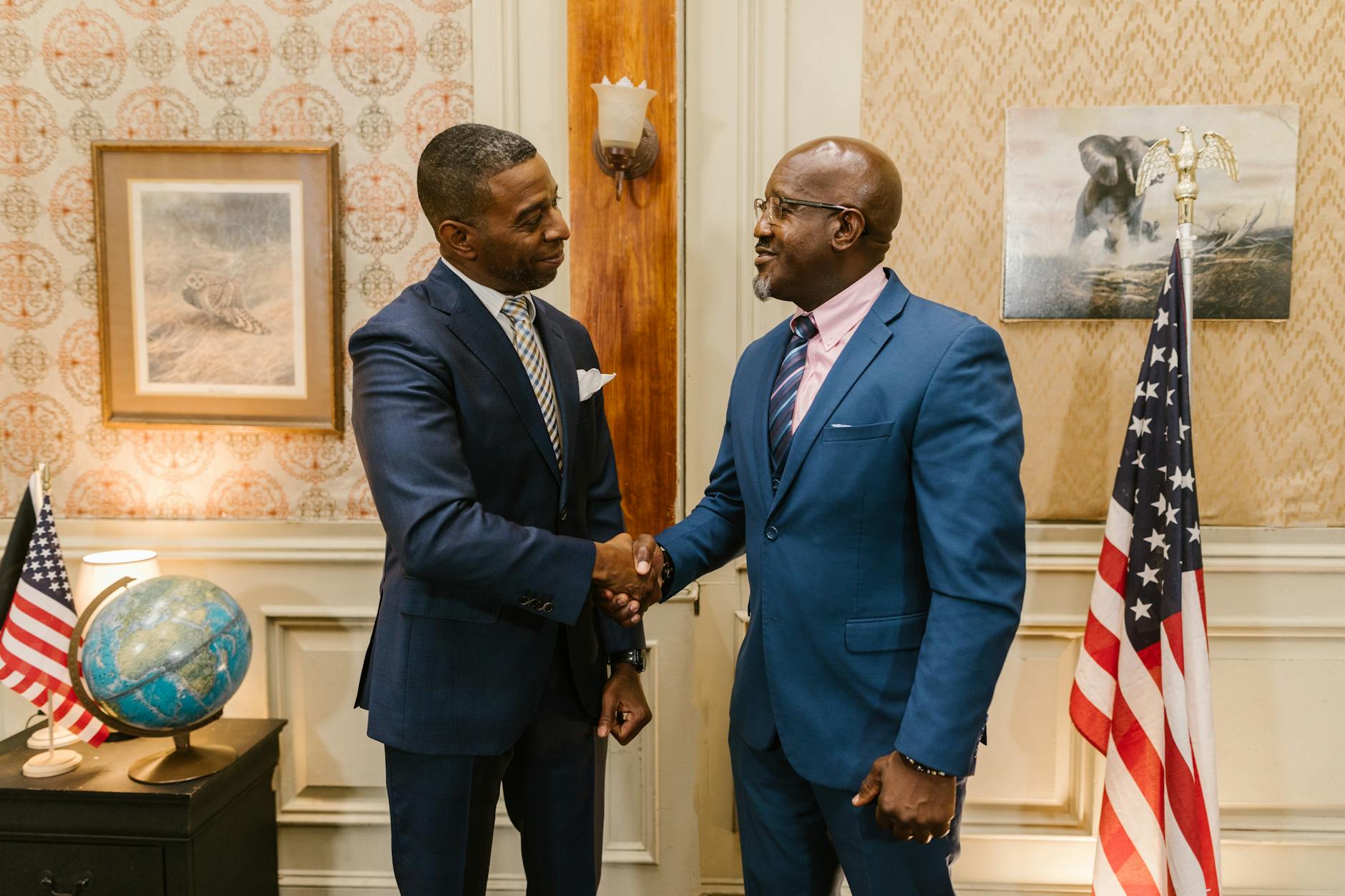Irony or Strategy? Decoding J.D. Vance’s U.K. Vacation Amidst Populist Rhetoric
A look at Senator Vance’s recent trip to the United Kingdom, examining the perceived disconnect between his public image and private pursuits.
In the often-turbulent landscape of American politics, public figures are constantly under scrutiny, their actions dissected for any hint of hypocrisy or strategic maneuvering. Senator J.D. Vance, a prominent voice in the conservative populist movement, has recently found himself at the center of such examination following a trip to the United Kingdom. Vance, who has built a significant portion of his political brand by criticizing perceived globalist elites and championing the concerns of the American working class, reportedly spent time in the U.K., a detail that has raised questions about the intersection of his rhetoric and his personal choices.
The New Yorker article, “The Curious Symbolism of J. D. Vance’s English Getaway,” delves into this apparent juxtaposition, prompting a deeper consideration of what Vance’s international travel signifies in the context of his political identity. The piece suggests a tension between Vance’s on-the-record critiques of established institutions and the perceived exclusivity often associated with trips to countries like the United Kingdom, particularly when contrasted with the economic realities of the very constituents he claims to represent.
This article aims to explore these themes comprehensively, moving beyond the initial observations to provide a balanced perspective. We will examine the political context in which Vance operates, the potential interpretations of his U.K. visit, and the broader implications for political messaging and public perception. By dissecting the various facets of this narrative, we seek to offer a nuanced understanding of the situation, acknowledging the complexities inherent in political representation and personal life.
Context & Background
J.D. Vance rose to national prominence with his 2016 memoir, *Hillbilly Elegy: A Memoir of a Family and Culture in Crisis*. The book offered a raw and poignant account of his upbringing in Appalachia, detailing themes of poverty, addiction, and the struggles of a community grappling with economic decline and cultural alienation. Vance’s narrative resonated with many, painting a picture of a forgotten America often overlooked by urban elites and coastal media.
Following the success of his memoir, Vance became a vocal commentator on American social and economic issues. He often articulated a critique of globalization, free trade agreements, and what he perceived as the detrimental effects of cultural liberalism on traditional American values. This critique formed a cornerstone of his political platform as he transitioned from author and commentator to elected official, culminating in his successful campaign for the U.S. Senate representing Ohio in 2022.
Vance’s political rhetoric frequently employs a populist framework, emphasizing a divide between the “common people” and a detached, often out-of-touch elite. He has been a vocal critic of international organizations, perceived globalist agendas, and what he describes as the erosion of national sovereignty. This stance has positioned him as a champion for working-class Americans who feel left behind by economic and cultural shifts.
The article from The New Yorker highlights a reported trip Vance took to the United Kingdom, a nation with its own complex history of class, national identity, and debates surrounding its relationship with global institutions. The choice of the U.K. as a destination for a politician who often rails against perceived globalist tendencies is precisely what lends itself to critical examination. The United Kingdom, with its historical ties to American culture and its position as a significant global player, can be seen as emblematic of the very “establishment” that Vance has, at times, positioned himself against. The article points out that such a trip, especially if it involves accommodations and activities associated with a certain level of affluence, can create a perceived dissonance with his public persona as a champion of the economically disadvantaged.
To understand the significance of this perceived dissonance, it’s crucial to consider the broader political climate. Populist movements, globally and within the United States, often thrive on a narrative of authenticity and a direct connection to the experiences of ordinary people. When political figures who embody this narrative engage in activities that appear to contradict that image, it can open them up to accusations of hypocrisy or being “out of touch.” This is particularly true when the contrast is drawn between their public pronouncements and their private lifestyle choices, especially if those choices appear to align with the very “elites” they criticize.
The political implications are also significant. For Vance’s supporters, such a trip might be dismissed as a personal matter or a necessary diplomatic engagement. For his critics, however, it serves as further evidence of a disconnect between his image and his reality, potentially undermining his credibility with the base he seeks to represent. The symbolic weight of visiting a nation like the United Kingdom, rich with historical and cultural associations that can be interpreted in various ways, amplifies these considerations. It prompts questions about whether such travel is a strategic engagement with influential global circles or an embrace of the very establishment that Vance has vociferously challenged.
In-Depth Analysis
The core of the discussion surrounding J.D. Vance’s U.K. trip, as highlighted by The New Yorker, revolves around the concept of “symbolism” and its impact on political branding. Vance has cultivated a political identity deeply rooted in an anti-establishment, populist ethos, positioning himself as an advocate for those who feel marginalized by globalist elites and the perceived cultural shifts emanating from coastal urban centers. His rhetoric often emphasizes authenticity, a connection to the “real America,” and a rejection of perceived pretentiousness.
Against this backdrop, a vacation to the United Kingdom can be interpreted in multiple ways, each carrying symbolic weight. If the trip involved stays in upscale hotels, engagement with traditional British institutions, or participation in activities commonly associated with the affluent, it could be seen as a contradiction to his populist messaging. Critics might argue that this demonstrates an affinity for the very world he purports to disdain, suggesting that his populism is more of a performative strategy than a genuine reflection of his lifestyle or values.
The article suggests that Vance’s political brand is built on identifying and critiquing the perceived disconnect between the lived experiences of ordinary Americans and the lifestyles of those in positions of power and influence. By traveling to a country like the U.K., which has its own historical narratives of class and privilege, Vance’s actions can be viewed as inadvertently aligning himself with the very symbols of elitism he has campaigned against. This is particularly potent because the U.K. represents a significant nexus of global finance, diplomacy, and cultural influence – spheres often targeted by populist critiques.
Furthermore, the timing and nature of such trips are crucial. If the visit was a purely personal “getaway,” it raises questions about the sincerity of his commitment to his stated principles when presented with opportunities for leisure and luxury that may be out of reach for many of his constituents. Conversely, if the trip had underlying diplomatic or information-gathering purposes, related to foreign policy or understanding global economic trends, then the framing shifts. However, without clear articulation of these purposes, the perception of a personal indulgence rather than a politically strategic engagement can dominate.
The article’s title, “The Curious Symbolism of J. D. Vance’s English Getaway,” directly addresses this potential for symbolic contradiction. It implies that the choice of destination and the likely manner of travel and accommodation carry a narrative that might not align with Vance’s carefully constructed public image. This isn’t about accusing Vance of not being allowed to travel or enjoy his success, but rather about the strategic implications of how such activities are perceived by the electorate, particularly the segment that forms the bedrock of his support. Populist leaders often find themselves under intense scrutiny for any perceived deviation from their core message, as authenticity is a key currency in their political capital.
Moreover, the “elite” can be a fluid term, encompassing not just economic wealth but also cultural capital, education, and access to exclusive networks. A trip to the U.K., especially if it involves interactions with the British establishment or cultural institutions, could be perceived as an embrace of this broader definition of elite. For voters who feel their concerns have been ignored by those in positions of power, seeing their representative engage in activities that appear to mirror those of the elite they oppose can be disillusioning. This is a delicate balancing act for any populist politician: to operate within the existing structures of power and influence necessary for governance while maintaining a connection to the anti-establishment sentiment that brought them to power.
The analysis also points to a potential strategy of “inoculation” by critics. By highlighting such trips, opponents can attempt to preemptively frame Vance as a hypocrite, thereby undermining his credibility. Conversely, Vance’s supporters might view these criticisms as an attempt by the establishment media to discredit a figure who challenges their narrative. This dynamic highlights the polarized nature of modern political discourse, where actions are often interpreted through pre-existing partisan lenses.
Ultimately, the “curiosity” of the symbolism lies in the perceived tension between Vance’s vocal critiques of globalism, elitism, and economic inequality, and a vacation to a country often seen as a bastion of historical privilege and international influence. It invites a consideration of whether Vance’s actions are a strategic engagement with the world he critiques, a genuine personal indulgence, or a misstep that could alienate segments of his base. The article, by raising this question, prompts a deeper look into the complex relationship between political messaging, personal lifestyle, and the enduring power of symbolism in shaping public perception.
Pros and Cons
Examining the perceived symbolism of J.D. Vance’s U.K. trip involves weighing potential advantages and disadvantages, particularly concerning his political brand and public perception.
Potential Pros:
- International Engagement and Diplomacy: Even a personal trip to the United Kingdom could offer opportunities for informal networking and understanding of international affairs, which can be beneficial for a U.S. Senator. Engaging with different cultures and political landscapes can broaden perspectives, potentially leading to more informed policy decisions. Vance could argue that understanding global dynamics is crucial, even for a nationalist-leaning politician.
- Maintaining a Diverse Political Brand: While Vance champions a specific segment of the electorate, a politician must also engage with the broader world. A trip abroad, if managed correctly, can be presented as a necessary part of staying informed and relevant on the international stage. It can project an image of a well-rounded individual capable of understanding complex global issues, which might appeal to a wider range of voters who value a global outlook.
- Personal Well-being and Recharging: Politicians, like anyone else, require personal time for rest and rejuvenation. A vacation, regardless of destination, is a means to manage stress and maintain personal well-being, which is essential for sustained public service. Framing the trip purely as an “elite” indulgence might overlook the human need for downtime.
- Potential for Cultural Enrichment and Broadened Perspective: Experiencing different cultures and historical sites, such as those in the U.K., can offer valuable insights and perspectives that might not be readily available domestically. This can lead to a more nuanced understanding of societal structures, economic systems, and historical influences, which could indirectly inform his approach to domestic policy.
Potential Cons:
- Perceived Hypocrisy: The most significant criticism is the potential for hypocrisy. If Vance’s political platform is built on criticizing globalist elites and championing the working class, a vacation to a historically affluent and globally influential nation like the U.K. can be seen as a stark contradiction. Critics can argue that his lifestyle does not align with the economic realities of many of his constituents, suggesting he is out of touch.
- Alienating the Base: For a significant portion of his base, the appeal of Vance lies in his perceived authenticity and his promise to fight against the established order. If his actions are perceived as embracing the very institutions and lifestyles he criticizes, it could alienate these core supporters who prioritize his anti-establishment credentials.
- Negative Media Framing: As highlighted by The New Yorker article, media outlets can frame such trips in a way that amplifies any perceived dissonance. This can lead to negative press coverage that focuses on the “curious symbolism” rather than substantive policy discussions, potentially damaging his public image and political capital.
- Distraction from Key Issues: A trip that becomes a subject of intense public and media scrutiny can distract from the substantive policy debates and legislative work that Vance is expected to undertake. The focus shifts from his policy positions to his personal choices, which can be a detrimental diversion.
- Symbolic Representation of “Elitism”: Even if the trip was not overtly extravagant, the destination itself – the United Kingdom – carries historical and cultural connotations of class, privilege, and traditional power structures. For critics, this choice alone can symbolize an affinity with the elite, regardless of the specifics of the travel arrangements.
The effectiveness of Vance’s response or explanation regarding this trip will be crucial in mitigating these cons. If he can articulate a clear rationale that bridges his public persona with his private actions, he might be able to neutralize some of the criticism. However, the inherent symbolism of the destination remains a potent point of contention in the current political climate.
Key Takeaways
- Senator J.D. Vance, known for his populist rhetoric against global elites, has drawn attention for a reported vacation to the United Kingdom.
- The New Yorker article highlights the perceived symbolism of this trip, questioning the alignment between Vance’s public brand and his leisure activities.
- Vance’s political identity is largely built on advocating for the working class and critiquing established institutions and perceived elitism.
- Critics may view a U.K. trip as a contradiction, suggesting hypocrisy or a disconnect from his stated values and the economic realities of his constituents.
- For his supporters, such a trip could be seen as a personal matter or necessary international engagement, but it risks alienating those who prioritize his anti-establishment image.
- The symbolism of visiting a nation with historical ties to class and privilege can be potent, regardless of the specific details of the travel.
- The incident underscores the scrutiny populist figures face regarding authenticity and the potential for their lifestyle choices to be interpreted as contradictory to their messaging.
- The political discourse surrounding such events often highlights the deep polarization, where actions are frequently viewed through partisan lenses.
Future Outlook
The incident surrounding J.D. Vance’s U.K. trip, while seemingly about a personal vacation, offers insights into the enduring challenges faced by politicians, particularly those who operate within the populist sphere. The future outlook for Vance, and politicians like him, will likely involve a continued balancing act between projecting an authentic connection with their base and navigating the realities of governance and international engagement.
For Vance, the key will be how he manages the narrative surrounding such perceived discrepancies. If he can provide clear, transparent explanations that align his actions with his principles, he may be able to mitigate the damage. This could involve framing such trips as essential for understanding global economic trends or for subtle diplomatic engagements that benefit his constituents, even if these are not overt official duties. The ability to articulate a rationale that resonates with his base, emphasizing that global awareness does not equate to abandoning one’s core values, will be crucial.
Furthermore, the media’s role in shaping these narratives will continue to be significant. Political journalists and commentators will likely scrutinize similar actions by Vance and his contemporaries, analyzing them for inconsistencies. This means that for politicians building their brand on anti-establishment sentiment, personal choices will remain under a microscope, and any perception of “selling out” or embracing elite lifestyles can be amplified.
The broader trend of populism globally suggests that the appeal to authenticity and a critique of perceived elite detachment will persist. Therefore, the tension between the lived experience of populist leaders and the often-privileged environments they inhabit, or choose to visit, will remain a fertile ground for political debate and media analysis. Politicians who can navigate this terrain with perceived sincerity and strategic communication are more likely to maintain the trust of their core supporters.
Looking ahead, we can expect Vance to continue his advocacy for his constituents, likely addressing issues of economic fairness and national sovereignty. However, the “curious symbolism” of his U.K. getaway may serve as a recurring reference point for critics seeking to question his authenticity. His ability to demonstrate consistency in his policy positions and public engagements will be vital in reinforcing his political brand.
The future will also likely see increased public demand for transparency regarding the personal lives of public figures. As social media continues to provide more immediate access to information and commentary, politicians will need to be increasingly mindful of how their actions are perceived by a diverse and often critical electorate. The ability to connect personal choices with political philosophy, or to justify them within a broader strategic framework, will be a hallmark of successful leadership in this era.
Call to Action
The conversation around J.D. Vance’s U.K. trip invites a broader reflection on the relationship between political representation, personal lifestyle, and public perception. As citizens, we are tasked with engaging with political figures not just on their stated policies but also on the coherence of their actions and rhetoric. This incident serves as a reminder of the importance of critical consumption of political narratives and the constant need for transparency from our elected officials.
For those who follow Senator Vance’s career, consider the following actions:
- Engage with verified information: Seek out reporting from reputable news organizations that provide balanced perspectives and factual accounts. Be wary of emotionally charged headlines or partisan interpretations that may oversimplify complex issues.
- Examine political rhetoric critically: Consider the underlying messages and potential implications of a politician’s words and actions. Does their public persona align with their perceived lifestyle? What are the potential consequences of any perceived dissonance for the constituencies they represent?
- Demand transparency: Encourage public officials to be open about their activities, particularly those that could be perceived as contradictory to their core messages. Understanding the rationale behind decisions, whether personal or professional, can foster greater accountability.
- Support nuanced discussion: Participate in or advocate for political discourse that moves beyond simplistic accusations of hypocrisy. Focus on the substance of policy and the practical impact of political decisions on the lives of ordinary citizens.
- Consider the broader context: Recognize that politicians operate within a complex political landscape. Understanding the pressures, opportunities, and symbolic meanings associated with their actions is crucial for informed citizenship.
Ultimately, the goal is to foster a more informed and engaged electorate that can hold its representatives accountable while understanding the multifaceted nature of political life. By critically evaluating information and encouraging transparency, we can contribute to a more robust and representative democracy.









